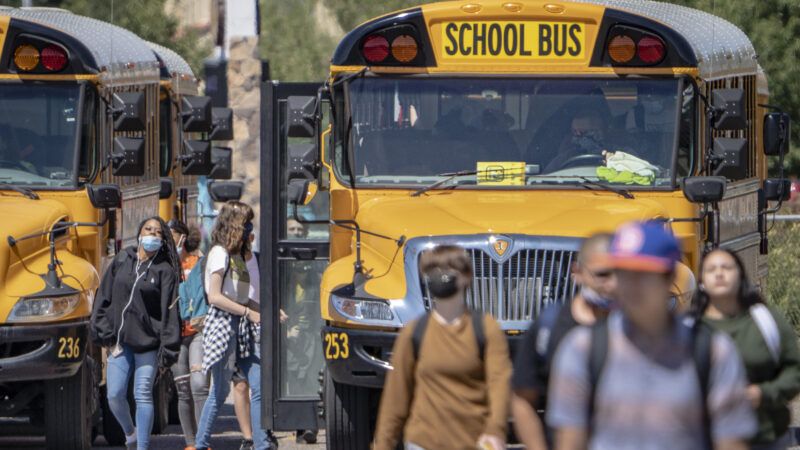High-Quality 'Public' Schools Don't Want Low-Income Students
School enrollment based solely on geography must come to an end.

Public education nationwide is not as free or equal as many would like to believe it is.
Most K–12 school children are assigned to their public school through geographic school districts. Educational opportunities are largely determined by where parents can afford to live. Congress acknowledged this in a 2019 Joint Economic Committee report stating, "Families are faced with the reality that attending a high-performing public school often requires paying more for housing, and many students' educational opportunities are limited as a result."
The report found that the median home value in zip codes associated with highly rated schools is quadruple the median home value in zip codes associated with poorly rated schools. This means that students (especially those who struggle with housing insecurity, are in the foster care system, or are simply from a low-income family) can get stuck in low-performing schools and barred from highly rated public schools simply because their families cannot afford to purchase a home in a better district.
Including the cost of tuition in the cost of housing is antithetical to the idea of free public education. Unfortunately, some education officials are outspoken proponents of this system and are working to keep low-income kids out of their classrooms.
Kansas superintendents Tonya Merrigan and Brent Yeager of the high performing Blue Valley Schools and Olathe Public Schools districts recently submitted written testimony in opposition to a groundbreaking proposal that would weaken the bond between housing prices and schooling quality. Merrigan and Yeager claimed they can only offer a high quality education to the families that can afford to buy into their communities.
"While we can certainly empathize with parents in lower-performing districts, both Blue Valley and Olathe are among the highest-performing districts in Kansa—indeed competing nationally—and, as such, would find our districts overwhelmed with requests from non-residents," they wrote. "Without intending to sound elitist, it is nonetheless true that housing costs in our districts often provide a check on resident student growth now."
In other words, the high cost of living keeps less affluent kids out of their schools.
High-performing public schools often have the best and most experienced teachers in a school district and greater academic amenities, such as tutoring services and mentorship. Unfortunately, government-imposed district boundaries create exclusive educational enclaves nationwide. As Tim DeRoche wrote in his book, A Fine Line, "Poor families know that there are good or even great public schools in their district….But their children aren't allowed to attend those schools. Who is allowed to attend? Wealthier people who pay through their mortgage or their rent for access to these public schools that are 'public' in name only."
Despite the fact that vulnerable students would benefit the most from the academic advantages and climate of high-performing schools, geographic barriers and housing prices create an insurmountable barrier. Families that try to get around this unfair system to do what's best for their child can find themselves wrapped up in the court system. This was true for Kelley Williams-Bolar, a mother from Ohio who received two concurrent five-year sentences (suspended to 10 days) for using her father's address to enroll her children in a better school district.
Kansas policymakers, however, are looking to change the geography-based status quo. The House Committee on K-12 Education Budget submitted a proposal that would weaken these barriers through open enrollment. Following the lead of Florida and Wisconsin, this proposed open enrollment policy would allow children to attend any public school outside their assigned school district with open seats on a first-come, first-served basis.
The proposal would break the geographic monopoly by requiring school districts to accept transfer students with limited exceptions, such as capacity. Transfer students cannot displace students who are already residentially assigned to the school district. Each school district would report the number of available seats to the Kansas Department of Education and post them on the district website. School districts would be prohibited from charging transfer students tuition, and the legislation includes a provision about providing transportation to non-resident students. These are just some of the tactics districts use to keep disadvantaged students out of open seats.
Open enrollment makes public education more student-centered, instead of institution-centered, since families have greater flexibility to enroll in public schools that are the right fit for them, rather than being stuck in a certain school because of where they live. And open enrollment is just one part of the wider school choice ecosystem.
Kansas' open enrollment proposal would be a boon to families that cannot afford to purchase homes in expensive school districts, giving them access to high-quality education options.
Most of the nationwide 48.2 million K–12 students enrolled in public schools are stuck in an outdated and discriminatory system. Families, not elitist school districts, should decide where their children can go to school.


Show Comments (133)